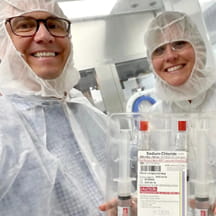What has become a journey spanning nearly five years and counting at St. Louis Children’s Hospital began with a simple inquiry.
“A Black family came forward and expressed concern because their daughter had not been receiving basic hair hygiene,” says Laura Watson M.S.N., RN, CDFT, St. Louis Children’s, in a Children’s Hospital Association webinar. “It had actually been more than a week since she had received any kind of hair care.”
Digging further, Watson found the predominantly white nursing staff in the hospital's critical care unit simply didn't know how to properly care for a Black child's hair. To avoid making any mistakes, they deferred hair care for Black patients to the unit's only Black nurse and patient care technicians (PCTs).
That revelation led to one of the nation’s first pediatric hospital hair care equity programs.
Mitigating disparities in representation
Nationally, research shows that a lack of representation among caregivers in health care organizations with the communities they serve can result in variabilities in the quality of care. “What we found is within our own walls, this lack of representation led to a lack of awareness, lack of understanding and disparities in care,” Watson says.
To address those issues, Watson assembled a collaborative workgroup of six colleagues in the spring of 2018 to devise a hair care equity program. In addition to gathering patient and caregiver feedback and sourcing the proper hygiene products, the team focused on building a training curriculum. They produced instructional videos, care product description sheets, scripting prompts for caregivers and even a mobile simulation cart, complete with mannequins for nurses to hone their skills
But it was important to Watson and her team that the education went beyond just the technical aspects of tending to patients’ needs. “Our workgroup was adamant that we didn’t want this to just be ‘how to wash hair,’” Watson says. “We wanted to make sure it was in the context of cultural considerations and historical significance.”
The hospital rolled out the curriculum to its nurses, nurse practitioners and PCTs in July 2019. Watson says staff feedback on the program has been excellent, and the post-implementation survey results bear that out—positive responses around providing hair care for Black patients more than doubled:
- Comfort level in providing hair care: 30% pre-implementation, 66% after.
- Ease in identifying hair care needs: 23% pre-implementation, 51% after.
Communication, supply-chain management are key
Watson says a comprehensive communication strategy is critical to success in this endeavor. It’s important to involve key stakeholder parties early in the process, including parents, supply-chain staff, frontline caregivers and hospital leadership. Effective communication can also help your team prepare for conversations that may arise around this sensitive topic, according to Watson.
But perhaps one of the biggest challenges the team faced involved securing the products needed to care for the needs of its Black patients. Navigating the supply chain infrastructure can be difficult, so Watson says it’s key to ensure your team includes members who are knowledgeable about the specific products needed and how to source them. Institutions that have already begun the process of strategically diversifying their vendor network have a leg up.
“With just six of us doing that work, sometimes it was like having to push everything up a mountain,” Watson says. “Having a supplier-diversity program in place would have been a huge gate-opener for us.”


